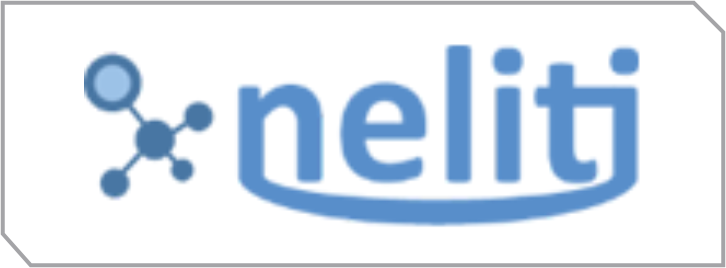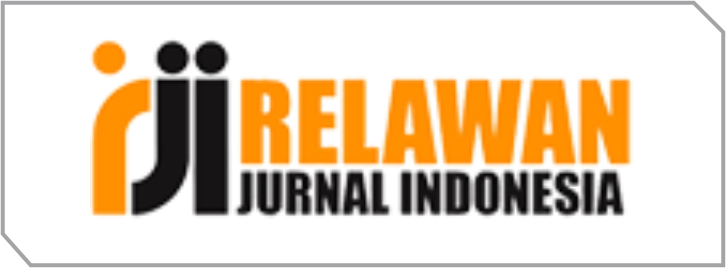Business Model Canvas and SWOT Analysis as a Development Strategy Frozen Food Culinary Industry
DOI:
https://doi.org/10.53748/jbms.v3i3.60Keywords:
Business Model Canvas, SWOT, Culinary IndustryAbstract
The purpose of this study is to analyze the business condition of the home industry Frozen Food Pempek Palembang Kukuinutri using Business Model Canvas. Next, to create a new Business Model Canvas Frozen Food Pempek Palembang Kukuinutri, the scope of this research is focused on analyzing Business Model Canvas along with internal (importance and performance) and external (industry competition) factors of home industry Frozen Food Pempek Palembang Kukuinutri, as well as the formation of new business models using BMC based on future industries. The research method used is descriptive with a qualitative approach. Data collection was carried out using interview techniques with the owner of Frozen Food Pempek Palembang Kukuinutri. This type of research is a case study. The analysis technique used is SWOT analysis to see the weaknesses and threats faced by optimizing the advantages and opportunities owned and business mapping using the Business Model Canvas (BMC). This research produces solutions that can be used by business owners to be able to expand market reach on the Value Proposition element by attending business development training so that the products produced are more varied, Channel elements to add channels by participating in Bazar Events, Key Resources elements by creating production houses and more competent workforce, Key Partner elements to make halal logo certification and BPOM. The results of this research will later be used to create strategies to increase revenue streams, especially for planning offline store openings.
Downloads
References
Amanullah, A. N. A. A., Aziz, N. F. A., Hadi, F. N. H. A. H., & Ibrahim, J. (2015). Comparison of Business Model Canvas (BMC) among The Three Consulting Companies. International Journal of Computer Science and Information Technology Research, 3(2), 462-471.
Bateman, T. S., & Snell, S. A. (2002). Management: Competing in The New Era. McGraw-Hill.
Benzaghta, M. A., Elwalda, A., Mousa, M. M., Erkan, I., & Rahman, M. (2021). SWOT analysis applications: An integrative literature review. Journal of Global Business Insights, 6(1), 55-73.
Castro, D., Atkinson, R., & Ezell, S. (2010). Embracing the Self-Service Economy, Washington: Information Technology and Innovation Foundation, [Online], Available: http://www.itif.org/files/2010-self-service-economy.pdf
Chen, C. F., & Wang, J. P. (2016). Customer participation, value co-creation and customer loyalty – A case of airline online check-in system.’ Computers in Human Behavior, 62, 346–352.
Evelina, N., Waloejo, H., D., & Listyorini, S. (2013). Pengaruh Citra Merek, Kualitas Produk, Harga, Dan Promosi Terhadap Keputusan Pembelian Kartu Perdana Telkomflexi (Studi kasus pada konsumen TelkomFlexi di Kecamatan Kota Kudus Kabupaten Kudus). Jurnal Ilmu Administrasi Bisnis, 1(1), 203–213.
Faridah, H. D. (2019). Sertifikasi Halal Di Indonesia: Sejarah, Perkembangan, Dan Implementasi. Journal of Halal Product and Research, 2(2), 68-78.
Hardilawati, W. Laura. (2020). Strategi Bertahan UMKM di Tengah Pandemi Covid-19. Jurnal Akuntansi Dan Ekonomika, 10(1), 89–98.
Haryono, T. (2010). Pentingnya menjaga dan meningkatkan hubungan baik dengan konsumen dalam masa krisis. JEJAK Jurnal Ekonomi Dan Kebijakan, 3(1), 46-66.
Hoffman, D. L., & Novak, T. P. (2005). A Conceptual Framework for Considering Web-Based Business Models and Potential Revenue Streams. International Journal of Marketing Education, 1(1), 7-34.
Jannah, M. (2018). Analisis pengaruh biaya produksi dan tingkat penjualan terhadap laba kotor. Banque Syar’i. Jurnal Ilmiah Perbankan Syariah, 4(1), 87–112.
Kaban, I. D. (2020). Analisa Inovasi Pelayanan Pengguna Jasa Penerbangan Melalui “Airport Digital” Di Bandara Soekarno Hatta. Jurnal Manajemen Pendidikan Dan Ilmu Sosial, 1(1), 211–223.
Kumala, R., & Junaidi, A. (2020). Strategi Bisnis Dan Pemanfaatan Kebijakan Pajak Di Masa Pandemi COVID-19 Dan Era New Normal (Studi Kasus Pelaku UKM Marketplace). Human Relations, 3(1), 1–8.
Kuncoro (2009). Metode Penelitian Bisnis (2nd ed.). Penerbit Erlangga.
Kurniawan, F. A. (2017). Pendekatan Business Model Canvas Sebagai Perancangan Strategi Bisnis Baru. SKETSA BISNIS, 4(2), 123–135.
Lazuardi, M. & Triady, S. M. (2015). Ekonomi Kreatif: Rencana Pengembangan Kuliner Nasional 2015-2019. PT Republik Solusi.
Mardiana, N., & Hidayat, T. (2018). Pengembangan Key Resources Dan Key Partnership dalam Aktivitas Bisnis Industri Kreatif UKM Garuda Jaya Malang. Cakrawala: Jurnal Litbang Kebijakan, 12(1), 107-117.
Morris, M., Schindehutte, M., & Allen, J. (2005). The entre-preneur’s business model: Toward a unified perspective. Journal of Business Research, 58, 726-735.
Natalia, C., & Astuario, R. (2015). Penerapan model green SCOR untuk pengukuran kinerja green supply chain. Jurnal Metris, 16(2), 97–106.
Oktapriana, C., Nurdiniah, D., Bhuana, K. W., & Novianti, N. (2021). Pendampingan Perhitungan Harga Jual Melalui Metode Service Learning Bagi Kedai Kopi Di Kota Bekasi. LOGISTA-Jurnal Ilmiah Pengabdian Kepada Masyarakat, 5(2), 265–274.
Octavanny, V. (2021). Analisis Model Bisnis pada UMKM Kuliner yang Menerapkan Konsep Sharing Food. Journal of Research on Business and Tourism, 1(1), 1-15.
Osterwalder, A., & Pigneur, Y. (2009) Business Model Generation. Wiley.
Osterwalder, A. & Pigneur, Y. (2010). Business Model Generation. Wiley & Sons, Inc.
Payne, A., & Frow, P. (2005). A Strategic Framework for Customer Relationship Management. Journal of Marketing, 69(4), 167–176.
Payne, A., Frow, P. & Eggert, A. (2017). The customer value proposition: evolution, development, and application in marketing. Journal of the Academy of Marketing Science, 45, 467–489.
Putranto, A. (2017). Analisis Pengaruh Biaya Produksi Dan Penjualan Terhadap Laba Perusahaan (Studi Pada Usaha Mikro Kecil Dan Menengah Di Kecamatan Wonosobo Kabupatenwonosobo). Jurnal Penelitian Dan Pengabdian Kepada Masyarakat UNSIQ, 4(3), 280–286.
Rahayu, V. P., Astuti, R. F., Mustangin., Sandy, A. T. (2022). Analisis SWOT dan Business Model Canvas (BMC) Sebagai Solusi dalam Menentukan Strategi Pengembangan Usaha Kuliner. International Journal of Community Service-Learning, 6(1), 112-121.
Rangkuti, F. (2018). Teknik Membedah Kasus Bisnis Cara Perhitungan Bobot, Rating, dan OCAI (24th ed.). PT Gramedia Pustaka Utama.
Rozmi, A. N. A. (2022). The Perception of ICT Adoption in Small Medium Enterprise: A SWOT Analysis. International Journal of Innovation and Business Strategy (IJIBS), 9(1), 69-79.
Sanusi, A. (2011). Metode Penelitian Bisnis. Salemba Empat.
Setyorini, H., & Santoso, I. (2017). Analisis strategi pemasaran menggunakan matriks SWOT dan QSPM (studi kasus: Restoran WS Soekarno Hatta Malang). Industria: Jurnal Teknologi Dan Manajemen Agroindustri, 5(1), 46–53.
Slávik, Š., & Bednár, R. (2014). Analysis of Business Models. Journal of Competitiveness, 6(4), 19-40.
Somantri, G. G., Satria, A., & Iskandar, B. H. (2018). Analisis Model Bisnis PT Pahala Bahari Nusantara Dengan Menggunakan Pendekatan Model Bisnis Kanvas. ALBACORE Jurnal Penelitian Perikanan Laut, 2(1), 1–12.
Sugiyono. (2016). Metode Penelitian Kuantitatif, Kualitatif, dan R&D. Alfabeta.
Susilowati, I. H. (2021). Pengembangan Bisnis Fashion Muslim Dengan Pendekatan Business Model Canvas (BMC). Jurnal Perspektif, 19(2), 113–121.
Suwarni, E., & Handayani, M. A. (2020). Strategi Pengembangan Bisnis Usaha Mikro Kecil Menengah Keripik Pisang Dengan Pendekatan Business Model Kanvas. MBIA, 19(3), 320–330.
Syah, R. F., Fasa, M. I., & Suharto, S. (2021). Analisis SWOT dalam Strategi Pemasaran Produk Perbankan Syariah di Indonesia. Al-Kharaj: Jurnal Ekonomi, Keuangan & Bisnis Syariah, 3(3), 396–416.
Syamsurizal, S. (2020). Peran Kepemimpinan dan Penerapan Manajemen Perubahan dalam Peningkataan Daya Saing Organisasi Perguruan Tinggi. Jurnal Administrasi Bisnis Internasional, 1(1), 608-617.
Trias (2020, Desember 19). Apa Itu BPOM? Inilah Pengertian Dan Panduan Lengkap Tentang BPOM. https://izin.co.id/indonesia-business-tips/2020/12/18/bpom-adalah/
Tripayana, S., & Pramono, J. (2020). Kualitas Produk, Pelayanan, dan Loyalitas Pelanggan Dimana Kepuasan Sebagai Variabel Intervening pada UKM Start Up Pariwisata Kombuchi Brewing Co, Bali. JEMAP (Jurnal Ekonomi, Manajemen, Akuntansi dan Perpajakan, 2(2), 182-195.
Wang, C. (2022). Efficient Customer Segmentation in Digital Marketing Using Dee Learning with Swarm Intelligence Approach. Information Processing & Management an International Journal, 59(6), 103085.
Wardhanie, A. P., & Kumalawati, D. (2018). Analisis business model canvas pada perpustakaan Institut Bisnis dan Informatika Stikom Surabaya dalam meningkatkan kualitas perguruan tinggi. Berkala Ilmu Perpustakaan DanInformasi, 14(2), 124–132.
Wu, Y. (2020, February 17). The marketing strategies of IKEA in China using tools of PESTEL, Five Forces Model and SWOT Analysis [Paper Presentation]. International Academic Conference on Frontiers in Social Sciences and Management Innovation, Beijing, China.
Yona, S. (2006). Penyusunan Studi Kasus. Jurnal Keperawatan, 10(2), 76-80.
Zulfikar, R. Mayvita, Prihatini, A., & Purboyo, S. (2019) Adopsi Teknik Penyusunan Business Plan Model Canvas Untuk Perencanaan Bisnis Umkm Kuliner Jalanan Di Kawasan Gatot Subroto Banjarmasin. Jurnal Pengabdian Al-Ikhlas, 4(2), 171-185.
Zott, C., Amit, R., & Massa, L. (2011). The business model: Recent developments and future research. Journal of Management, 37, 1019-1042.
Downloads
Published
How to Cite
Issue
Section
License
Copyright (c) 2023 Journal of Business, Management, and Social Studies

This work is licensed under a Creative Commons Attribution 4.0 International License.
Authors retain copyright and grant the journal right of first publication with the work simultaneously licensed under a Creative Commons Attribution 4.0 (CC 4.0) that allows others to share the work with an acknowledgment of the work's authorship and initial publication in this journal.


















